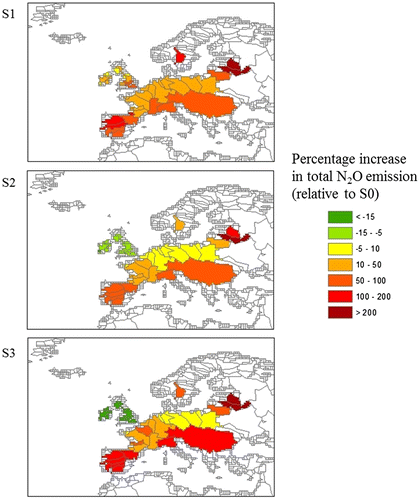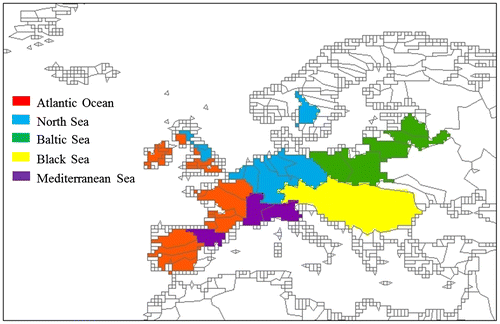Figures & data
Table 1. Scenario descriptions: assumptions about growing energy crops in the study area for three scenarios, using the GO 2050 MA scenario as a baseline (S0).
Figure 2. Land use in the scenarios S0–S3 (total area: 2.9 106 km2, see Table for scenario descriptions; source: Global NEWS).

Table 2. Total N2O emissions (Gg N2O/y) from the use of synthetic fertilisers in the baseline scenario and the biofuel scenarios (S0–S3, see for description Table ) and in 2000 and the increase of N2O emissions in the biofuel scenarios relative to S0Table Footnotea and 2000Table Footnoteb.
Figure 3. Increase in biogenic N2O emissions (direct and indirect) associated with the use of synthetic fertilisers in the three future scenarios S1–S3 (as percentage of the baseline scenario S0, calculated (for scenario Sx) as N2O emission ((Sx–S0)/S0×100%) (see Table for scenario overview).


